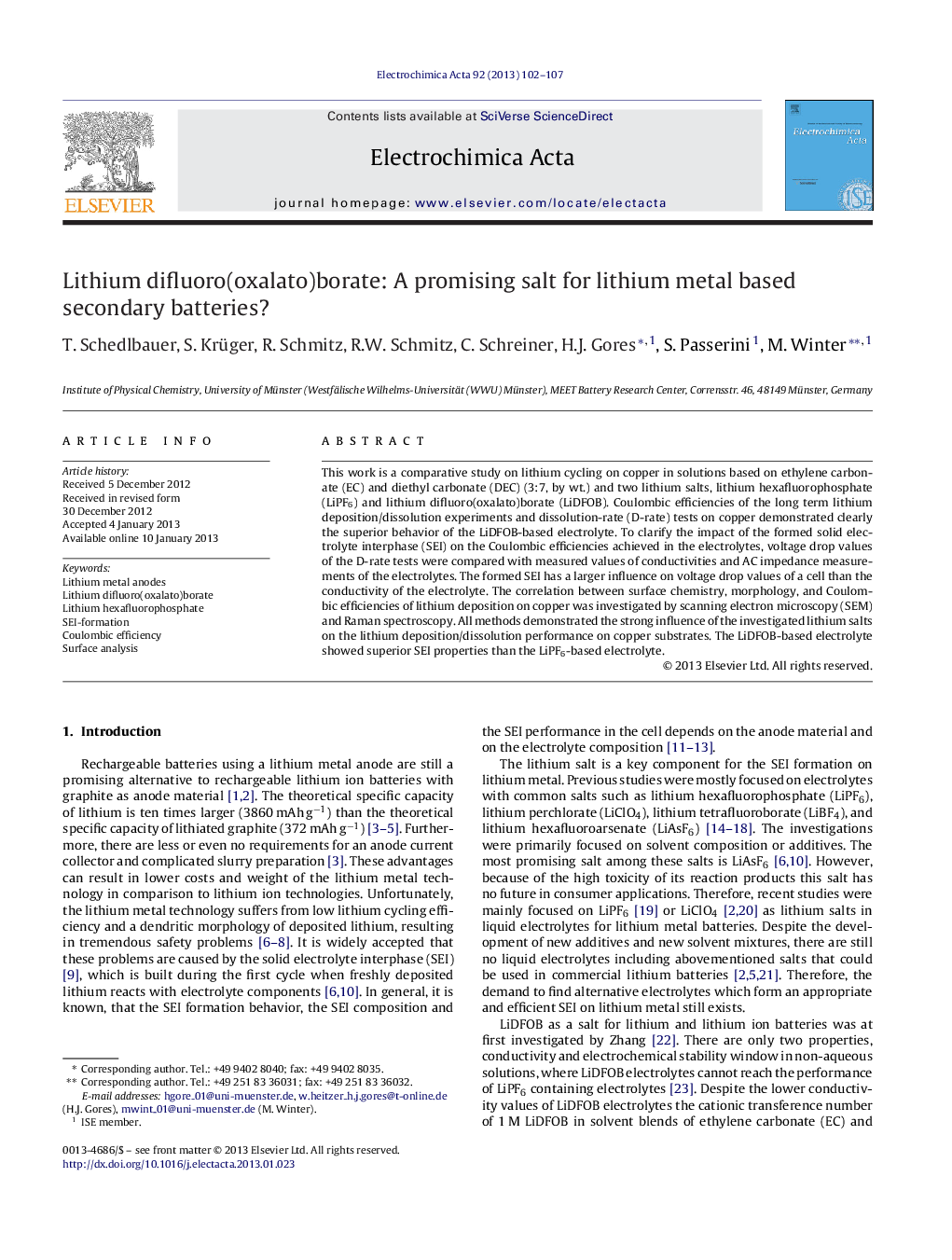| Article ID | Journal | Published Year | Pages | File Type |
|---|---|---|---|---|
| 6618160 | Electrochimica Acta | 2013 | 6 Pages |
Abstract
This work is a comparative study on lithium cycling on copper in solutions based on ethylene carbonate (EC) and diethyl carbonate (DEC) (3:7, by wt.) and two lithium salts, lithium hexafluorophosphate (LiPF6) and lithium difluoro(oxalato)borate (LiDFOB). Coulombic efficiencies of the long term lithium deposition/dissolution experiments and dissolution-rate (D-rate) tests on copper demonstrated clearly the superior behavior of the LiDFOB-based electrolyte. To clarify the impact of the formed solid electrolyte interphase (SEI) on the Coulombic efficiencies achieved in the electrolytes, voltage drop values of the D-rate tests were compared with measured values of conductivities and AC impedance measurements of the electrolytes. The formed SEI has a larger influence on voltage drop values of a cell than the conductivity of the electrolyte. The correlation between surface chemistry, morphology, and Coulombic efficiencies of lithium deposition on copper was investigated by scanning electron microscopy (SEM) and Raman spectroscopy. All methods demonstrated the strong influence of the investigated lithium salts on the lithium deposition/dissolution performance on copper substrates. The LiDFOB-based electrolyte showed superior SEI properties than the LiPF6-based electrolyte.
Keywords
Related Topics
Physical Sciences and Engineering
Chemical Engineering
Chemical Engineering (General)
Authors
T. Schedlbauer, S. Krüger, R. Schmitz, R.W. Schmitz, C. Schreiner, H.J. Gores, S. Passerini, M. Winter,
